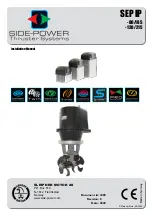
Table 4-1. LED Connection
ATmega4809 Pin
Function
Shared Functionality
PF5
Yellow LED0
4.2.2
Mechanical Switch
The ATmega4809 Curiosity Nano board has one mechanical switch. This is a generic user-configurable switch. When
the switch is pressed, it will drive the I/O line to ground (GND).
Tip:
There is no externally connected pull-up resistor on the switch. To use the switch, make sure that an
internal pull-up resistor is enabled on pin PF6.
Table 4-2. Mechanical Switch
ATmega4809 Pin
Description
Shared Functionality
PF6
User switch (SW0)
4.2.3
Crystal
ATmega4809 Curiosity Nano has a 32.768 kHz crystal footprint made for standard 3.2 mm by 1.5 mm surface-mount
crystals with two terminals.
The crystal footprint is connected to the ATmega4809 by default, but the GPIOs are routed out to the edge connector
through not mounted resistor footprints (J207 and J208).
The two I/O lines routed to the edge connector are disconnected by default to both reduce the chance of contention
to the crystal as well as removing excessive capacitance on the lines when using the crystal. To use the PF0 and PF1
pins as GPIO on the edge connector, some hardware modification is needed.
• Any crystal should be disconnected when the pins are used as GPIO, as this might harm the crystal
• To connect the routing solder a 0 Ω resistor or add a solder blob to the footprints J207 and J208
The crystal has a cut-strap next (J209) to it, which can be used to measure the oscillator safety factor. This is done by
cutting the strap and adding a 0402 SMD resistor across the strap. More information about oscillator allowance and
safety factor can be found in the
application note from Microchip.
The cut straps and solder points can be seen in
Table 4-3. Crystal Connections
ATmega4809 Pin
Function
Shared Functionality
PF0
TOSC1 (crystal input)
PF1
TOSC2 (crystal output)
ATmega4809 Curiosity Nano
Hardware User Guide
©
2020 Microchip Technology Inc.
User Guide
DS50002804B-page 27
















































